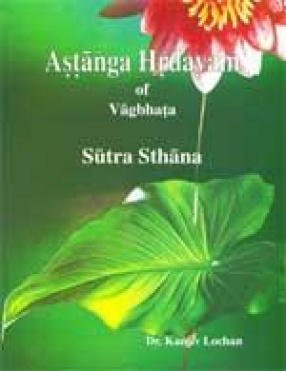
Kanjiv Lochan

Showing all 10 books




Diagenosis forms the most significant part of medicine. The development of the science of diagnosis through successive stages of history makes not only an interesting read but it also equips one with the experiences, successes and the learning achieved by countless generations in th yore and help one to address problems of the future in an prganized way.
The pre-modern diagnostics as prevalent and propounded by seers like Caraka and Susruta and countless other ...

The present work has been evolved with certain deliberate purposes:1) placing Ayurveda in a proper format to the international community which increasingly support and utilize alternative and pre-modern medical systems 2) presenting various themes and factors of Ayuveda under a single cover so that students could acquire needful and meaningful insights into its diverse disciplines and 3) presenting the classical Ayurveda to the lay readers who are interested in ...

As a first attempt of an authentic dictionary of Ayurvedic terms used in classic texts and their commentaries the present manual fills a real gap felt by many students of Indian medicine as well as lay readers. It provides the readers not with a mere superficial enumeration of Ayurvedic terms and their English equivalents but offers them precise and authentic definitions and explanations. These terms include ones related to pharmaceutical processes, herbs and ...

The development of medicine constitutes a branch of historical studies second to none in utility and interest. The present work, aimed at both general and academic readers is a seminal contribution highlighting the evolution of medicine in one of the greatest civilizations of the world. The author divides the development of Indian medicines into diverse phases dominated by the sorcerers, curers, and finally, the vaidyas i.e. the doctors. These ...

Even if the use of Ayurvedic drugs is restricted to the vaidyas and their followers, the dietary rules and regulations prescribed by Ayurveda has universal acceptance. The system of allopathy generally does not take notice of the meals and regimen followed by the patients. Nonetheless, even allopathic practitioners many a time suggest the Ayurvedic dietary regulations.Ayurveda puts a great stress on the diet and diet habit which are called 'Pathya'. It ...

The students of Ayurveda encounter great difficulty in visualizing various tools and apparatuses related to surgery and the pharmaceutical practices. These tools have been described at many places across the classical texts as well as in various modern writings. However, on occasions, narrative through pen suffers from certain limitations. But where pen fails to convey the idea, pencil comes to our rescue. It has been realized that there ...


The readers may notice that the serial nos. of the various Slokas in the Astanga Hridaya’s various manuscripts available have been paralleled by a different serial no. The involved passages are the interpolations made by various commentators of the text. These interpolations have been included in the present edition. The problem of proof work of the Text has been compounded by a multiplicity of readings of the work. We have tried our ...

Till now, no thesaurus was available to the readers of Ayurveda. Chaukhambha Publications is happy to bring out this collection. Prepared under the guidance of Dr. Kanjiv Lochan, who has been regularly writing for Ayurveda; this book would be very useful to those students who get bewildered due to a multiplicity of synonyms of various Ayurvedic herbs. The book would also address the lacuna created by the unavailability of the Paryaya Ratna Mala of Madhavakar. At ...

The Astanga Hrdayam or the Core of Eight Limb Science amply justifies its title as it indeed forms the basic principles and narratives of the Ayurveda, traditionally divided into eight parts. The treatment of subject has been done in to the point and fact of matter manner in this text. The descriptions presented in the work has been so impressive that it become one of the most popular texts of Ayurveda in India and beyond. Availability of the ...
